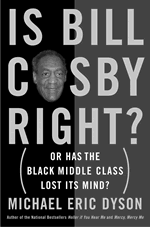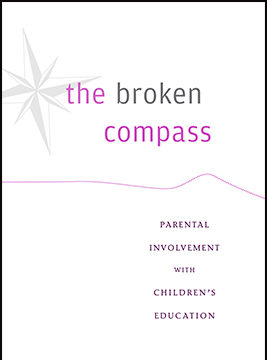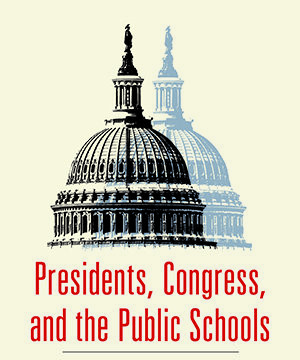 Tough Liberal: Albert Shanker and the Battles over Schools, Unions, Race, and Democracy
Tough Liberal: Albert Shanker and the Battles over Schools, Unions, Race, and Democracy
By Richard D. Kahlenberg
Columbia University Press, 2007, $29.95; 552 pages.
As reviewed by Nathan Glazer
“Madman or Visionary?” reads the publicity material that accompanies this biography of Albert Shanker. The dust jacket describes the paradigmatic moment in Woody Allen’s 1973 movie, Sleeper, in which a future Rip Van Winkle awakens to learn that civilization was destroyed when “a man by the name of Albert Shanker got hold of a nuclear warhead.” Five years earlier, Shanker, leader of the New York City teachers union, shook the city with a series of strikes to defend the rights of teachers who had been dismissed from Brooklyn schools. The schools were part of an experiment in “community control,” an approach to school reform then favored by liberals and black activists. The community in this case was black, and those governing the schools under the experimental program demanded black teachers and black principals. There were few in the New York City public schools at the time. Many teachers and principals were Jews, and members of that religious group, as schoolteachers, social workers, shopkeepers, and small landlords, were seen by black militants as the exploiters of African Americans. These Jewish occupational specialties were hardly at the heights of the economy, or the power structure, but from the perspective of the black ghetto, they were the power structure. Among whites with whom poor blacks came into contact, the book notes one observer saying, only the policeman was not Jewish. Community control over city schools pitted blacks against Jews. When, during one of these disruptive strikes, an anti-Semitic leaflet appeared, Shanker did not hesitate to reproduce it in the hundreds of thousands to paint his black opponents as Jew-haters. He was denounced for exacerbating group tensions in a difficult time.
In the early 1960s, Shanker had played a leading role in organizing 50,000 of New York City’s public school teachers. He was one of a group of tough union leaders who in defiance of state law led strikes by public employees, disrupted the lives of millions, and went to jail as a result. Mike Quill, the leader of the transit workers union, shut down the subways, to the outrage of millions of commuters, and went to jail as a result. Who remembers Quill? But everyone remembers Al Shanker, who once said in response to a question about the rights of schoolchildren, “they don’t pay the dues in this union.” Despite the similarities and the similar headaches they gave Mayor John Lindsay, Shanker was very different from Mike Quill. He was drawn from a radically different milieu, the Jewish working class, and those origins foreshadowed his transformation. Alongside his defense of teachers’ rights, there was always a larger vision, which made it possible for him to escape from the execration that liberals heaped on him in the 1960s.
Shanker graduated from fierce union leader to education statesman and leader in the world of education reform. Indeed, he does warrant a biography; no trade-union leader of the last 40 years, in the age after John L. Lewis, Sidney Hillman, Walter Reuther, David Dubinsky, and other shapers of American unionism, is so worthy of one.
Shanker came from a world that no longer exists, one in which bright young people with political interests were divided between Socialists and Communists. The conflicts between the two—in school arguments, in college organizations, in trade unions, in local politics—shaped a generation that was defined by two dominant traits, an unbending anti-Communism and a defense of unions and worker’s rights. One can only understand Shanker, and the paradoxes he presents to contemporary liberalism, from the point of view of those origins.
Shanker attended New York’s Stuyvesant High School, an examination school for the gifted, where he excelled in debate, and the University of Illinois, where he joined the Young People’s Socialist League and showed his organizational talents by drawing unexpectedly large audiences for Norman Thomas, the perennial Socialist candidate for president. His heroes were John Dewey and Sidney Hook, and he went on to study for a Ph.D. in philosophy at Columbia. But he ran out of “money and patience,” and at the age of 24 took a job as a teacher in a “tough East Harlem elementary school.” At the time, 1952, we are told, there were 106 teachers’ organizations in the New York City school system. The Teachers Guild, which Shanker joined, was part of the American Federation of Teachers (AFT). John Dewey held card #1 in the New York City local. The Communists were at the time powerful in New York City’s white-collar unions of teachers, social workers, and the like. The Teachers Guild and the AFT were fiercely anti-Communist, demanded collective bargaining (then controversial for teachers), and held a larger progressive social vision than most unions. For example, the AFT refused to charter segregated locals and filed an amicus brief in support of desegregation in Brown v. Board of Education.
Shanker rose rapidly in the union ranks, becoming president in 1964. Liberals (and Socialists, as Shanker was) were then united around the issues of civil rights, workers’ rights, and anti-Communism. In the wake of the community control struggle, this unity dissolved. Affirmative action split the liberals: Shanker was for affirmative action, but always against quotas. At the time, he even had important black allies, such as civil rights activist Bayard Rustin. Complicating the anti-Communist cause was the war in Vietnam. Shanker supported the war; to him it was a means to prevent the expansion of Communist totalitarianism, but to many other liberals and Socialists it was a doubtful effort at American hegemonism. Even workers’ rights divided liberals: with the rise of identity politics, and the shift of blue-collar voters to Nixon in protest of liberals’ anti-Vietnam war and pro–affirmative action stance, trade union issues lost their pristine value to many liberals. Shanker thought of himself as a liberal, indeed a Socialist; but for many liberals he seemed a racist conservative, as he maintained his fierce anti-Communist stance, supported American military power in defense of democracy, and insisted on the primacy of the trade-union movement in making a better society.
One detects in this complex of attitudes the seeds of present-day “neoconservatism,” which evolved among Socialist anti-Communists, and in time became the intellectual footing for a militant American foreign policy. Shanker was deeply committed to this orientation and defended strongly the AFL-CIO’s international work in support of free trade unions and against Communism. But that was only one of the roles he played. More significantly, he began to look at the problems of education from a larger perspective than that of organized teachers’ rights. He was an early proponent of charter schools, but turned against them as he saw some launched by black militants or religious conservatives. He wanted to implement a professional model for school teachers and supported peer review and tests for veteran teachers, which were not popular with the rank and file. Influenced by E. D. Hirsch, he supported a national curriculum and serious and high-stakes national tests and was a major figure in the painful evolution of this effort. In these enterprises, he became close to leading businessmen, governors, and presidents. For more than two decades as the leader of the smaller but more energetic and enlightened of the two major national teacher organizations, he became perhaps the single most important figure in the difficult effort to improve American schools.
Richard Kahlenberg is well known for his advocacy of affirmative action on the basis of economic criteria rather than racial identity, which was also Shanker’s strong preference. Kahlenberg has written a richly detailed and well-researched account of Shanker’s development, the positions he adopted, the influential roles he played. He finds little to criticize in Shanker’s career, and it was indeed for the most part an admirable one. It has no equal in American teacher unionism, or in the world of organized labor generally, and his story is an important contribution to the history of American education reform.
Nathan Glazer is professor emeritus of education and sociology at Harvard University.





